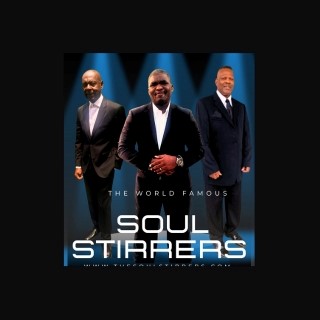The GRAMMY Award-winning a cappella group Take 6 is celebrating its 25th year in the recording business by releasing a new album with an old sound.
The group’s new CD, One (Shanachie), includes gospel and jubilee songs done originally by classic quartets such as the Selah Jubilee Singers, Golden Gate Quartet, and the Harmonizing Four.
“We went all the way back to the old gospel quartet songs and are bringing them to the modern day,” original member Alvin Chea told TBGB recently.
Take 6 has inherited the mantle worn originally by the instrument-mimicking Mills Brothers and, before them, the Sunset Four Quartette, whose musical imitation of a steam calliope was a treat for 1920s audiences.
Fact is, vocal harmony groups have been keen to experiment with complex rhythms and harmonies for decades. Back in the day, vocal contests challenged groups to outdo one another for top honors. More often than not, “top honors” meant only bragging rights, but that was sufficient when reputations were won and lost on a group’s ability to harmonize better than anyone else in the neighborhood.
Chea, who has been with Take 6 since its very beginning, told TBGB that his original goal was not to become a singer but to become a CBS anchor. “That was my dream. My mentor was Ed Bradley, and that’s where I wanted to go, but I also loved music. Mom wanted me to be able to play along with the hymns for church, so she encouraged me to take music lessons.”
Chea’s epiphany came when he heard Earth, Wind and Fire’s “September” for the first time. “I was like in the second grade and I remember standing there in front of the hi-fi system thinking, ‘What is that? It sounds like dessert!’”
Joining Take 6 while in college, Chea has been with the group all of his adult life. He said that while the sextette emulated the sound of groups such as the Winans, Commissioned, Earth, Wind & Fire, and the Doobie Brothers, original member Mark Kibble was the mastermind behind the group’s meaty “big band harmonies.”
Chea reflected: “I think back on how many experiences we’ve had together, the highs and lows, and to me the lows are when your character is built. Anybody can have fun at an amusement park, but going through the scary tunnel is a whole different thing!”
The members of Take 6 knew that they were on to something when they learned that Stevie Wonder had one of their recorded songs on his answering machine. Chea said that Wonder told them how their music “had changed his life more than anything he’d heard in the last twenty years.” The superstar invited the group to open for him at Radio City Music Hall. “Right then, we realized how full circle this music thing is: that someone we loved, loved us.”
Wonder wrote and sings “Can’t Imagine Love Without You” on One. “He is probably our best friend in the industry,” Chea said. “Every time he’s got something, we come running for whatever he needs us to do. When we need him, he’s there. He’s in the video for ‘One,’ along with some of our other industry friends.”
Chea explained that the concept for One as a gospel project came from members Mark Kibble, David Thomas and Khristian Dentley. “They took the helm on coming up with the concept and picking the songs. I heard the demos as they were coming down. When I heard what the originals sounded like, I was like, ‘Whoa!’ But sure enough, when the guys put their treatment to it, it sounded like us.”
Chea’s favorite on One is Randall Thompson’s “Alleluia,” a classical choral piece. “I heard Mark [Kibble] do a demo for someone else and I said, ‘Mark, we have to record that!’ It took me two days to figure out what he was doing to put down the bass part, but it’s gorgeous.”
Other songs on the album include the Harmonizing Four’s take on “Farther Along,” the Golden Gate Quartet’s “Noah,” and the Selah Jubilee Singers’ “Down Here I’ve Done My Best.” The title track is the album’s first single.
It took the group about two and a half months to put the project together. “The concept came together really quickly, but it took time to put together the arrangements and find the time while we are on the road to put everything down.”
Do the popularity of singing shows such as Glee and The Sing-Off help Take 6?
Absolutely, Chea said. “We did a cyber study of a cross-section of our audiences, and we find our audience to be old and young. We attribute the ‘very young’ to the TV generation. I am actually one of the vocalists on the show, Glee. I do all the vocal underscore that tosses to commercials.”
Chea chuckled. “We go into schools and do master classes, and I say, ‘We’ve got ten GRAMMYs.’ ‘Okay.’ ‘We can do this and do that.’ ‘That’s nice.’ ‘I sing on
Glee.’ ‘Wooowwww!’
Take 6 is currently traveling and promoting the CD, but hopes to do an official U.S. Tour later this year.
Is there a style of music Take 6 would like to do and hasn’t done yet?
“I would love to do a Brazilian project,” Chea said. “The beauty of the Portuguese language and the harmonies. I would love to do a top-to-bottom Portuguese project. I also wouldn’t mind doing a neo-soul track or two, maybe with Jill Scott, to break up some of this testosterone we have on stage! There’s so much out there to do, and so many people we’re huge fans of, it’s just getting around to all of it!
“Take 6 has been a true blessing and a wonderful lifestyle,” Chea reflected. “It’s not a career: it’s a lifestyle for us.”












 Visit Today : 1584
Visit Today : 1584 This Month : 40478
This Month : 40478